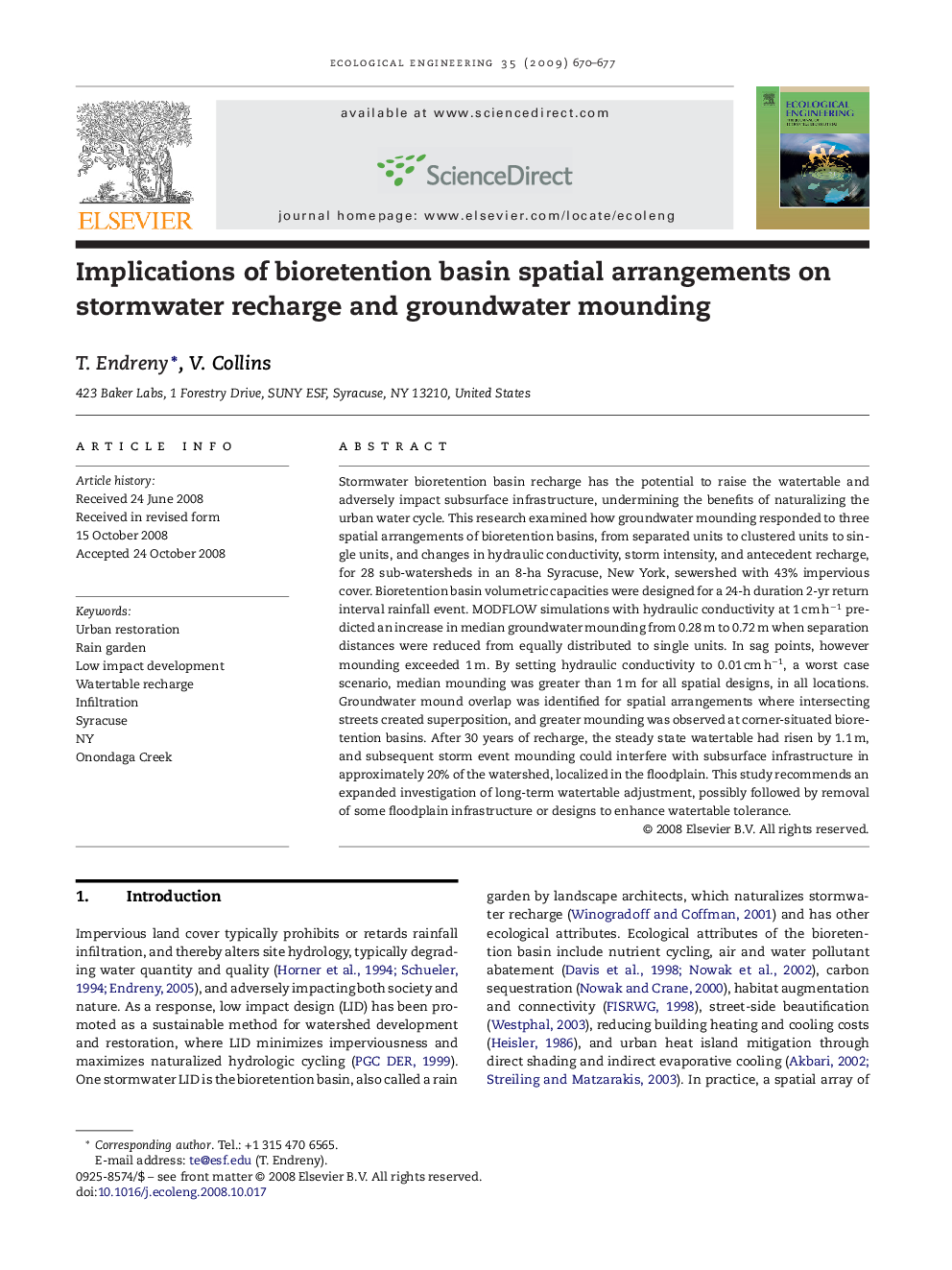| Article ID | Journal | Published Year | Pages | File Type |
|---|---|---|---|---|
| 4390937 | Ecological Engineering | 2009 | 8 Pages |
Stormwater bioretention basin recharge has the potential to raise the watertable and adversely impact subsurface infrastructure, undermining the benefits of naturalizing the urban water cycle. This research examined how groundwater mounding responded to three spatial arrangements of bioretention basins, from separated units to clustered units to single units, and changes in hydraulic conductivity, storm intensity, and antecedent recharge, for 28 sub-watersheds in an 8-ha Syracuse, New York, sewershed with 43% impervious cover. Bioretention basin volumetric capacities were designed for a 24-h duration 2-yr return interval rainfall event. MODFLOW simulations with hydraulic conductivity at 1 cm h−1 predicted an increase in median groundwater mounding from 0.28 m to 0.72 m when separation distances were reduced from equally distributed to single units. In sag points, however mounding exceeded 1 m. By setting hydraulic conductivity to 0.01 cm h−1, a worst case scenario, median mounding was greater than 1 m for all spatial designs, in all locations. Groundwater mound overlap was identified for spatial arrangements where intersecting streets created superposition, and greater mounding was observed at corner-situated bioretention basins. After 30 years of recharge, the steady state watertable had risen by 1.1 m, and subsequent storm event mounding could interfere with subsurface infrastructure in approximately 20% of the watershed, localized in the floodplain. This study recommends an expanded investigation of long-term watertable adjustment, possibly followed by removal of some floodplain infrastructure or designs to enhance watertable tolerance.
